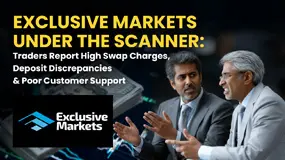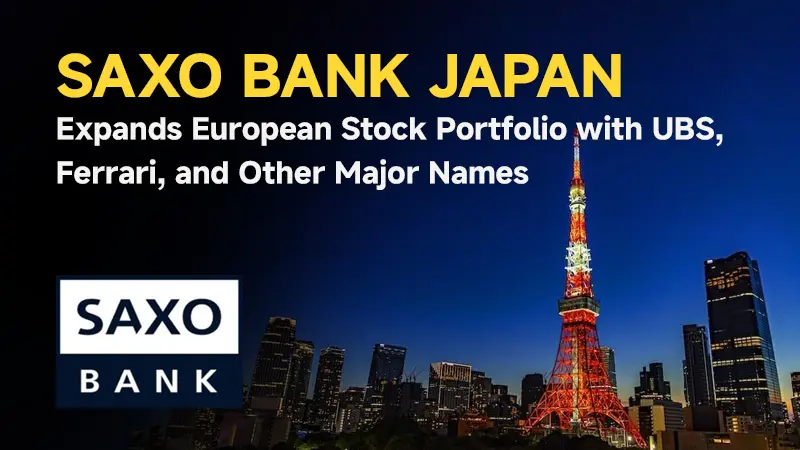简体中文
繁體中文
English
Pусский
日本語
ภาษาไทย
Tiếng Việt
Bahasa Indonesia
Español
हिन्दी
Filippiiniläinen
Français
Deutsch
Português
Türkçe
한국어
العربية
How Forex Trading Spread Impacts Your Trading Costs and Profitability
Abstract:The spread of forex trading is the difference between the sell price and the ask buy price. Whether you’re a beginner or an experienced trader, this article may help you understand spreads, and learning how to minimize them can make a significant difference in your trading.

The spread of forex trading is the difference between the sell price and the ask buy price. Whether youre a beginner or an experienced trader, this article may help you understand spreads, and learning how to minimize them can make a significant difference in your trading.
About Forex Trading Spread
The spread in forex is effectively the brokers fee for executing your trade. If EUR/USD is quoted at 1.1840/1.1842, the spread is 2 pips (1.1842 − 1.1840 = 0.0002). Every time you open a trade, you start at a small loss equal to the spread, because you buy at the higher ask price and sell at the lower bid price.
Types of Spreads
There are normally two types of spreads in the forex market.
- Fixed Spread
It can remain constant regardless of market conditions. However, its cost is often higher than typical variable spreads.
2. Variable (Floating) Spread
Variable spread fluctuates based on market volatility, liquidity, and urgent events. It offers lower costs during quiet market hours. However, it can widen dramatically during high-impact news, increasing risk.
Why Spread Matters
- Cost of Entry and Exit: Each round-trip trade must overcome the spread before you can profit. A 2‑pip spread on a 1‑lot (100,000 units) EUR/USD trade equates to $20 in costs before you even break.
- Scalping and High-Frequency Strategies: When you aim for small gains per trade, wide spreads can wipe out your profits. Scalpers often seek brokers offering sub-1‑pip spreads to make their strategy viable.
- Risk Management: Wider spreads increase the distance between your entry price and stop‑loss level, affecting position sizing and overall risk.
Factors That Influence Spread
- Market Liquidity: Major pairs like EUR/USD and USD/JPY generally have the tightest spreads. Exotic pairs often carry spreads of 3–10 pips or more.
- Trading Hours: Spreads are usually narrower during the London and New York sessions—when liquidity peaks—and widen during Asian and overlapping “quiet” periods.
- News Releases: Central bank announcements, economic releases, and political events trigger volatility, causing spreads to balloon temporarily.
- Different Types of Brokers:
- ECN/STP Brokers pass your order directly to the interbank market and typically offer very low spreads but charge a commission per trade.
- Market Maker Brokers set their spreads, and their spreads can be wider.
How to Minimize Spread Costs
- Choose the Right Broker: Compare ECN/STP brokers with competitive commission structures against market‑maker brokers with tight fixed spreads.
- Trade Major Currency Pairs: Stick with major currency pairs to benefit from deep liquidity and low spreads.
- Avoid News-Time Trading: Unless youre a volatility specialist, steer clear of opening new positions right before high-impact releases.
- Use Limit Orders: Placing limit orders can sometimes get you filled inside the spread, reducing your effective cost.
- Monitor Trading Hours: Schedule your trades when spreads are typically at their lowest.
Conclusion
By understanding how spreads work and finding a way to minimize them, you can lower your trading costs, improve your risk management, and ultimately enhance your profitability.

Disclaimer:
The views in this article only represent the author's personal views, and do not constitute investment advice on this platform. This platform does not guarantee the accuracy, completeness and timeliness of the information in the article, and will not be liable for any loss caused by the use of or reliance on the information in the article.
Read more

JP Markets Review: High Spread & Commission, Fake Bonus Lure & Withdrawal Hassles Frustrate Traders
Have you been lured into opening a JP Markets Forex Trading Account with a high bonus offer that never existed? Have you found the spread and commission charges higher on JP Markets Login than what’s advertised on the broker’s website? Wondering why you are not able to withdraw funds from your trading account? Well, all of these hint at a potential forex investment scam. Many traders have expressed their disappointment while sharing the JP Markets Review online. In this article, we have shared certain complaints. Take a look at them.

Exclusive Markets Under the Scanner: Traders Report High Swap Charges, Deposit Discrepancies & More
Is your forex trading account experience at Exclusive Markets far from good? Do you witness high swap fees and daily charges? Does the deposit fail to reflect in your Exclusive Markets Login? Don’t receive adequate response from the customer support official on your trading queries? You are not alone! Traders have already alleged that the forex broker is involved in these activities. In this Exclusive Markets WikiFX review article, we shared some traders’ comments. Read on to know about them.

Is Amillex Safe or a Scam? Understanding Rules and Security
You are asking an important question: Is Amillex safe or a scam? The simple answer is that Amillex works in an unclear area that needs careful study. It is not a complete scam like fake websites that steal your money right away, but it also does not meet the safety rules of the best, well-regulated brokers. Read on to explore more details.

Saxo Bank Japan Expands European Stock Portfolio with UBS, Ferrari, and Other Major Names
Saxo Bank Japan is broadening its investment offerings by adding over 100 European stocks from Denmark, Italy, Spain, and Switzerland. The expansion—set to launch on November 5, 2025—includes globally recognized companies such as UBS, Ferrari, Novo Nordisk, and Nestlé. This initiative enhances Saxo Bank Japan’s already extensive global stock lineup, aiming to support investors seeking diversification into leading European industries.
WikiFX Broker
Latest News
Is Nash Markets Regulated or Risk? Truth About Nash Markets’ License & Withdrawal Issues
Webull Widens Crypto Futures with Coinbase Derivatives
Latest FCA Daily Alerts and Consumer Warnings for 2025
CySEC Blocks Certification Access to Combat Advisor Impersonation
Angel one 2025 Review & Complaints
Exclusive Markets Under the Scanner: Traders Report High Swap Charges, Deposit Discrepancies & More
Annual Sales Of New Vehicles Expected To Hit Only 15.7 Million Units: Cox
Saxo Bank Japan Expands European Stock Portfolio with UBS, Ferrari, and Other Major Names
Amillex Broker Affiliate Program: A Complete Guide to Earning with Referrals
New SC Rules Take Effect in November 2025: What’s Next for Finfluencers?
Currency Calculator



